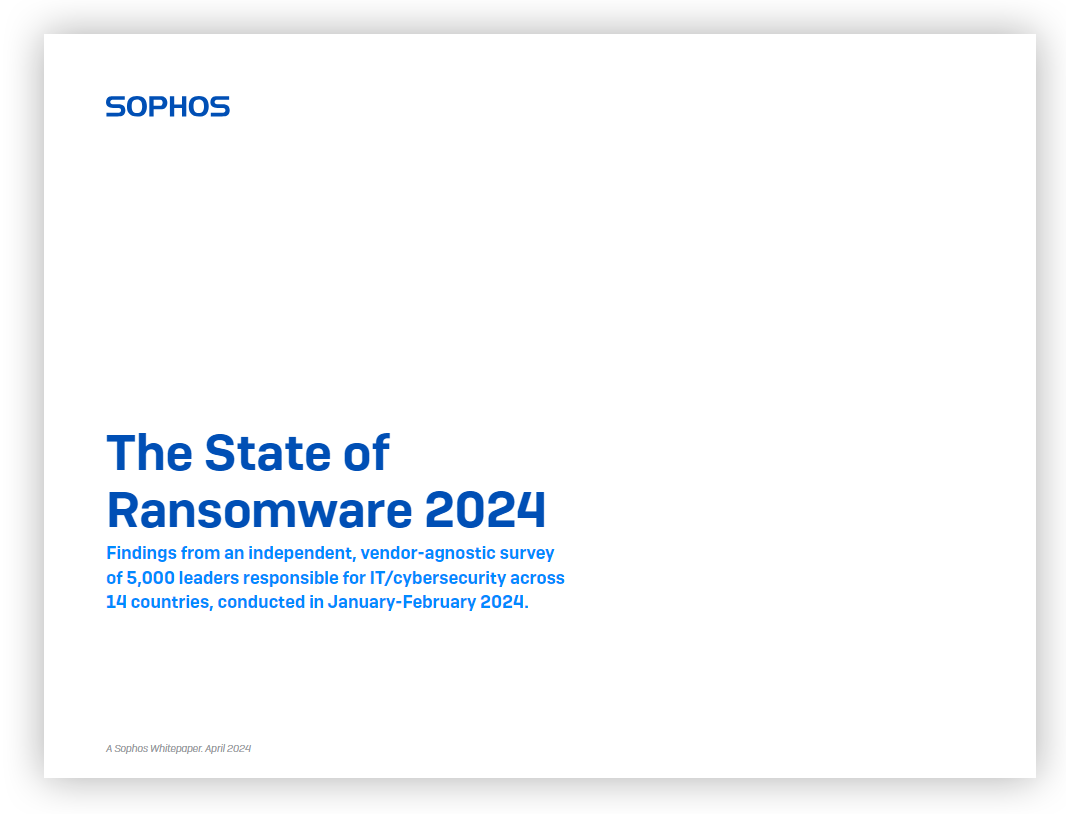Was ist XDR in der Cybersecurity?
Extended Detection and Response (XDR) ist eine Cybersecurity-Lösung, die Sicherheitsdaten aus mehreren Quellen kombiniert. Dabei automatisiert und beschleunigt XDR die Bedrohungserkennung, -analyse und -reaktion auf eine Weise, die Einzellösungen nicht bieten können. XDR wird als Plattform oder als Tool-Suite angeboten und kann von den Unternehmen bereitgestellt, verwaltet und betrieben werden.
Vorteile von XDR
- Erkennt Bedrohungen an mehreren Angriffsflächen, einschließlich Endpoints, Services, Netzwerk, E-Mail, Cloudinfrastruktur und mehr.
- Arbeitet auf mehr Ebenen und erfasst mehr Daten als Endpoint Detection and Response-Tools und schützt so vor mehrphasigen Bedrohungen, d. h. Angriffen, die an einer anderen Stelle enden als sie begonnen haben.
- Führt Daten von mehreren Sicherheitsprodukten zusammen, einschließlich der eigenen Produkte des XDR-Anbieters und der Lösungen von Drittanbietern, und erhöht so die Transparenz über zentrale Kontrollpunkte.
- Umfasst optimierte Tools und Workflows, sodass Sie in Ihrer gesamten Umgebung mit einem einzigen Tool nach Bedrohungen suchen und diese analysieren können.
- Stoppt blitzschnell Bedrohungen mit beschleunigten und automatisierten Reaktionsmaßnahmen.
- Minimiert Sicherheitsrisiken und optimiert so die Konditionen bei Cyberversicherungen.
Wie unterscheidet sich XDR von anderen Tools für die Bedrohungserkennung und -reaktion?
XDR vs. EDR
Endpoint Detection and Response (EDR) ist eine Cybersecurity-Lösung zur Überwachung, Erkennung von und Reaktion auf komplexe Bedrohungen und Sicherheitsvorfälle auf Endpoints wie Desktops, Laptops und Servern. Endpoints sind häufig die Einfallstore für Cyberangriffe und müssen daher umfassend geschützt werden. Sophos XDR Subscriptions enthalten leistungsstarke EDR-Funktionen.
XDR-Lösungen analysieren Daten an mehreren Angriffsflächen und integrieren Daten von Endpoints, Servern, Cloud-Umgebungen, Netzwerken, E-Mails und anderen Quellen.
XDR vs. MDR
Managed Detection and Response (MDR) ist ein 24/7 Fully-Managed Service, der durch ein Team von Sicherheitsexperten bereitgestellt wird. Diese sind auf das Erkennen und Bekämpfen von Cyberangriffen spezialisiert, gegen die reine Technologie-Lösungen machtlos sind. Durch die Kombination menschlicher Expertise und Schutztechnologien sowie modernsten Machine-Learning-Modellen können MDR-Analysten hochkomplexe, von Hackern manuell gesteuerte Angriffe erkennen, analysieren und beseitigen, um Datenverstöße und Ransomware zu verhindern.
Bei XDR verwalten Unternehmen und Organisationen die Bedrohungserkennung und -reaktion selbst mit konsolidierten Cybersecurity-Tools und -Workflows.
XDR vs. SIEM
Im Funktionsumfang überschneidet sich XDR mit SIEM-Tools (Security Information and Event Management). Genau wie XDR-Lösungen erfassen und analysieren auch SIEM-Tools zahlreiche Protokoll-Ereignisse und sonstige Daten aus unterschiedlichen Quellen. Eine SIEM-Lösung ist jedoch in erster Linie ein Suchtool, bei dem Benutzer mehrere Fragen stellen und aus den daraus resultierenden Antworten ihre eigenen Schlüsse ziehen müssen. XDR-Lösungen sind hingegen in der Lage, automatisch auf Bedrohungen zu reagieren. Falls keine automatische Reaktion durchgeführt werden kann, beschleunigen sie die von Analysten geleiteten Threat-Hunting- und Analyseaktivitäten und verkürzen so die Reaktionszeiten.
XDR vs. SOAR
SOAR-Plattformen (Security Orchestration, Automation and Response) können Sicherheitsexperten durch die Erstellung von Playbooks maschinell unterstützen. Playbooks enthalten Ablauflogiken, die Skriptaktionen auslösen können, wenn bestimmte Bedingungen erfüllt sind. Sie müssen diese Prozesse oder Workflows jedoch selbst erstellen. SOAR kann zwar bei der Verwaltung von Warnmeldungen helfen, erfordert jedoch erhebliche Investitionen in die Implementierung sowie eine fortlaufende Wartung (Tuning) durch erfahrene Sicherheitsanalysten, um ein effektives Case Management und Playbooks für die Reaktion auf Vorfälle zu erstellen.
Wie lässt sich XDR in eine Cybersecurity-Strategie einbinden?
XDR ist proaktiv und ermöglicht es Administratoren, bei Bedrohungen schnell zu handeln. XDR greift in jeder Phase eines Angriffs ein, vom initialen Zugriff über die Ausführung bis zur Wiederherstellung. Aufgrund der umfassenden Funktionen bietet sich XDR für verschiedenste IT-Infrastrukturen an – sowohl lokal als auch in der Cloud.
Wenn Ihr Unternehmen gewachsen ist, Sie Ihre Cybersecurity-Lösungen bisher jedoch nicht entsprechend angepasst haben, bietet sich XDR vielleicht jetzt für Sie an. Auch wenn Sie über ein Sicherheitsteam verfügen, das zwar gut aufgestellt ist, aber mit vielen Tools und Services jonglieren muss und sich zunehmend überfordert fühlt, könnte XDR die richtige Lösung für Sie sein.
Viele Unternehmen und Einrichtungen möchten ihre Sicherheitsanbieter und -produkte konsolidieren, um Risiken besser zu steuern und die Produktivität ihrer Security Operations zu steigern. XDR ist eine leistungsstarke Technologie, die genauere Erkennungs- und Präventionsfunktionen bei geringerer Total Cost of Ownership (TCO) bietet. XDR wird entweder als Produktlösung oder als Managed Service (MDR) angeboten und richtet sich an Sicherheits- und IT-Führungskräfte mit begrenzten Ressourcen, die die Gesamtkosten und Komplexität ihres Sicherheitsprogramms reduzieren möchten.
Benötige ich eine XDR-Lösung?
XDR ist ideal für Unternehmen, die bereits über ein erfahrenes IT-Team verfügen, sich jedoch mit der Vielzahl der vorhandenen Cybersecurity-Tools überfordert fühlen. Eine XDR-Lösung konsolidiert diese Services.
XDR ist besonders wichtig für Unternehmen, die mehrere Benutzer und Geräte verwalten oder mobile Mitarbeiter beschäftigen. Dabei eignet sich XDR als effektive Sicherheitslösung für alle Bereiche. XDR ist ein Muss in jeder Branche, in der sensible Daten gespeichert oder ausgetauscht werden, vom Finanz- bis hin zum Gesundheitswesen. So kann die passende XDR-Lösung verhindern, dass Cyberkriminelle Kundendaten auf einer E-Commerce-Website stehlen oder Dateien einer Bank verschlüsseln.
Da Cyberbedrohungen immer komplexer werden, greifen Unternehmen zunehmend auf XDR-Lösungen zurück.
Erste Schritte mit XDR von Sophos
Erfahren Sie, wie Sie mit Sophos XDR Ihre Erkennung und Reaktion optimieren und bessere Cybersecurity-Ergebnisse erzielen.
Mehr erfahren Mit einem Experten sprechen
Sophos Ransomware-Report 2024
Wie wahrscheinlich ist es, dass Sie Opfer von Ransomware werden? Wie viele Ihrer Computer wären betroffen? Diese und viele weitere Antworten finden Sie im Sophos Ransomware-Report 2024.

Verwandtes Sicherheitsthema: Was ist Zero-Trust-Security?


